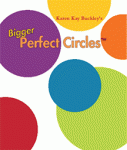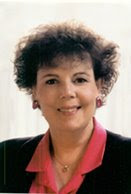
Friday, April 27, 2012
Alzheimer's Art Quilt Initiative - Great News!

Tuesday, April 24, 2012
Association of Pacific Northwest Quilters
Kathryn Botsford -
Campbell River, British Columbia, Canada
 |
| Colour Play Photo by Mark Frey |
Artisit Statement
I am passionate about quilting. My quilting is continually evolving and changing as I am learning and growing through exploring the endless possibilities quilting offers. I am not yet the quilter I want to be, but the journey is wonderful.
This quilt expresses some of the feelings and emotions I experience when working with colours and textures to create quilt art.
Techniques & Materials
Machine piecing, hand applique, hand and machine embellishment, and machine quilting. Commercial cottons, assorted yarns, trims, threads, and beads.
Anne C Gillihan
 |
| Pink Photo by Mark Frey |
Lake Forest Park, WA
Artist Statement
My goal for this challenge was for the color of the quilt to reach out and grab the viewers, then pull them in for a closer look.
Techniques & Materials
Hawaiian style needleturn applique using hand-dyed fabrics from Judy Robertson (Just Imagination). The background is based on Ricky Tims convergence technique again using hand dyed fabric from Judy. Hand quilted (echo pattern) with variegated thread and seed beads.
Friday, April 20, 2012
Quilt Show - Paint
Tuesday, April 17, 2012
Quilts etc, Sandy Utah


Stitching Through the Layers is now available at Quilts etc,
11 East Main Street
Sandy, UT 84070
(801) 255-2666
With classes like A Granddaughter's Delight, All Around the Block and All Tied Up who could go wrong checking out Quilts etc? Great shop, friendly people and Stitching Through the Layers, you couldn't ask for anything more!
Star quilt by Pat Bedont
  |
Friday, April 13, 2012
Art in public places
 Threading the Needle: Sewing in the Machine Age traces the development of the domestic sewing machine from the 1850s to the 1970s and celebrates over one hundred years of sewing. Pattern illustrations featured in the exhibition highlight ladies homemade fashions throughout the decades. A variety of notions from sewing boxes and sewing birds to needle cases, chatelaines, and pincushions, are also on display.
Threading the Needle: Sewing in the Machine Age traces the development of the domestic sewing machine from the 1850s to the 1970s and celebrates over one hundred years of sewing. Pattern illustrations featured in the exhibition highlight ladies homemade fashions throughout the decades. A variety of notions from sewing boxes and sewing birds to needle cases, chatelaines, and pincushions, are also on display.


Tuesday, April 10, 2012
Art in public places
Threading the Needle: Sewing in the Machine Age
For approximately 20,000 years, hand sewing with needles and thread made from various materials remained unchanged. When the sewing machine was first introduced to American homes in the 1850s, it was heralded as a laborsaving device that would transform the domestic lives of women everywhere. Sewing clothing and household linens, once a time consuming, never ending task, no longer had to be painstakingly completed by hand. The popular and influential Godey's Lady's Book soon coined the sewing machine "the queen of inventions" and declared that every family in the United States should own one.
Long before 1850, many inventors attempted to fabricate mechanical sewing devices. In 1790, 
New Yorker Walter Hunt (1796–1860), the inventor of the safety pin, developed an innovative sewing machine in 1834. It had an eye-pointed needle that used two spools of thread (one from above and one from below) to form a lockstitch. But Hunt neglected to patent his machine, and it was never manufactured due to production costs and pressure from many who f
Several other American inventors made important technical contributions to the development of the early sewing machine, but it was Isaac M. Singer patented the first truly, commercially successful sewing machine in 1851. His machine offered convenient features such as a foot treadle, which replaced the cumbersome hand crank to power the needle. Many more technological advances emerged during the Industrial Revolution that eased household sewing. For instance, power looms enabled retailers to offer vast quantities of fabrics by the yard, and easy-to-fit, mass-produced tissue paper patterns became available in standardized sizes.
Friday, April 6, 2012
Elaine's Quilt Block Salt Lake City Utah
 Stitching
Stitching Through the Layers is now available at Elaine's Quilt Block
Through the Layers is now available at Elaine's Quilt Block6970 South 3000 East
Salt Lake City, UT 84121
(801) 947-9100
They have a great selection quilting fabrics available for all of your quilting needs including homespun and flannel, civil war prints, batiks,
 and a broad selection of modern fabrics.
and a broad selection of modern fabrics.
Tuesday, April 3, 2012
All About Circles
This package contains 15 different circle sizes, 4 of each size, ranging from 7/16" to 2" for a total of 60 circles. Following the directions included in this package you can make perfect circles for your hand and machine applique.
Bigger Perfect Circles®

There are ten different sizes ranging from 2-1/4” to 4-1/2” and they are made from heat resistant plastic so you can use them with an iron. These bigger sizes are great for the center of a Mariner’s Compass block, Drunkard’s Patch blocks, traditional appliqué and so much more.
This package contains 15 different circle sizes, 4 of each size, ranging from 7/16" to 2" for a total of 60 circles. Following the directions included in this package you can make perfect circles for your hand and machine applique.










